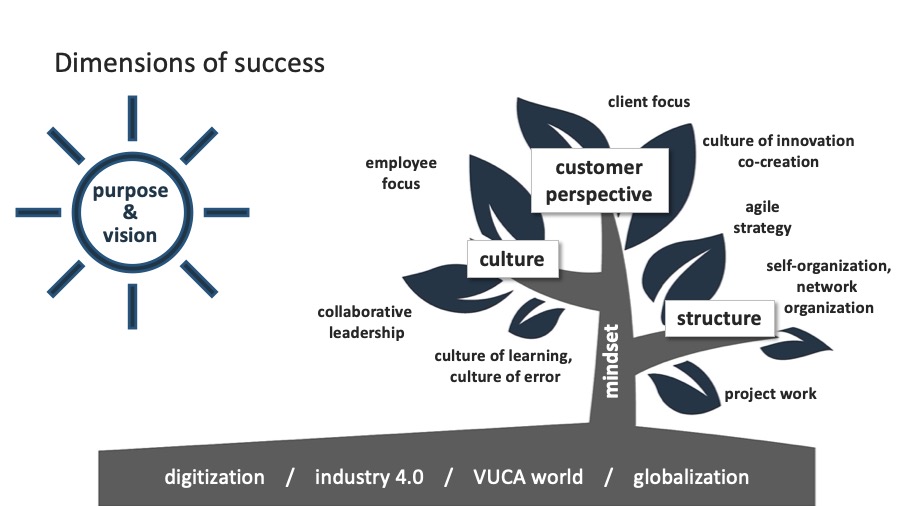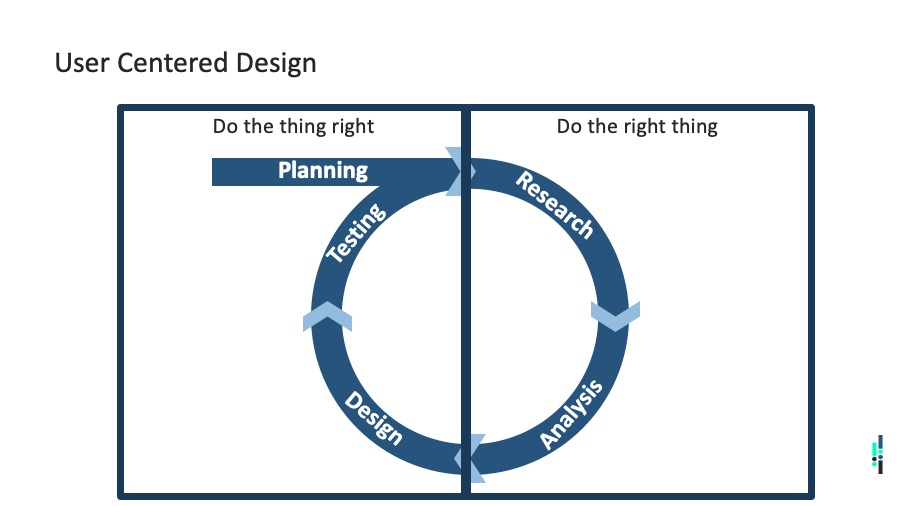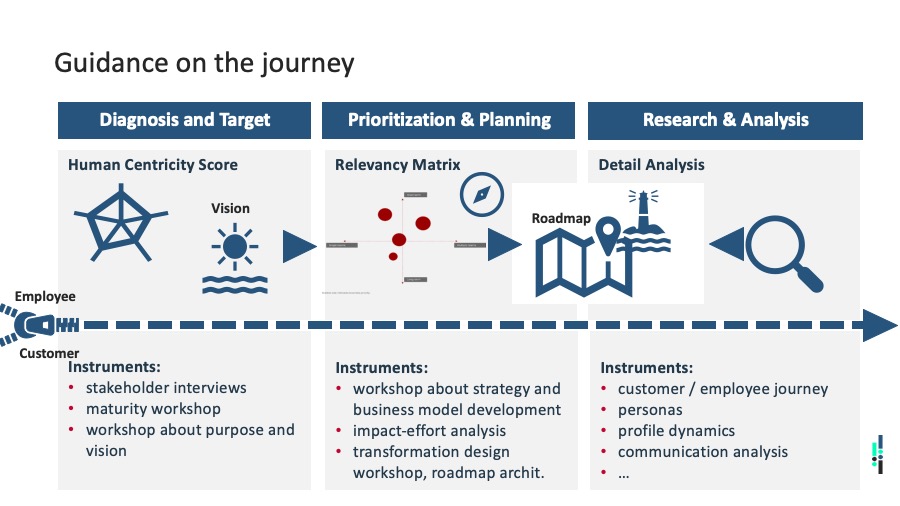It’s Wednesday, August 18, 2021, shortly before noon. I log into the Hangouts call of the New Work Berlin Meetup group and watch the number of participants grow steadily. A total of 75 people are registered. Tim Bosenick is also already online and checking whether everything is working with the technical equipment.
Tim is a former Boy Scout. The voluntary teamwork, without any distribution of power or hierarchy, had a great impact on him back then, so that the topic of human-centered work slowly came into his focus.
At shortly after 12 o’clock, Tim starts into the topic and tells us how he founded a company in the field of User Experience (UX) 21 years ago. The company grew quickly at that time. The main focus for Tim was on the corporate culture. It felt important for him to establish leadership without power: instead of using pressure, he wanted to lead through empathy and communication. When his company was then acquired by a larger corporation, he watched the cultural and structural changes with concern. These experiences had a lasting impact on Tim. A need arose from within him to find answers to the question:
How can work environments be created in which organizations meet the needs of their employees?
This is indeed a central question of the New Work movement. With his human-centered approach to finding solutions, Tim finally founded the consultancy SirConsa in 2017. Together with a network of experts, Tim now coaches and supports companies in team and organizational development. For these transformation processes, he uses the methods of the Employee Experience.
What is Employee Experience (EX)
The term Employee Experience has developed over the past few years and will almost certainly continue to gain importance in the future. Its goal is to create inspiring and motivating experiences for employees in the work environment in order to increase productivity. After all, intrinsically motivated employees make a lasting contribution to the company’s success and will retain their loyalty. Accordingly, all experiences that employees have within a company are relevant. They also have an enormous influence on the external image of an organization, its performance, and the formal and informal network of its employees. With the help of EX, managers in particular learn to perceive all processes and associated experiences from the perspective of employees.
For Tim, the term human-centered work is actually even more appropriate. In EX, the term experience in particular tends to be something passive. For Tim, however, people-centered work is based on active listening and a reaction to what is said. The results of this collaboration should always have an active character.
Why Employee Experience is so important today
On Tim’s slides, the tree of the EX mindset is based on the VUCA world (see graphic). Due to its volatility, uncertainty, complexity, but also ambiguity, it creates a high pressure to change. In order to be successful here, orientation is needed. Tim’s consulting works with the Human Centric Organization (HCO) Score. This score represents the dimensions culture, customer perspective and structure within a questionnaire. In this way, the status quo of the company can be determined. The first insight comes with the knowledge of one’s own values and comparative values of the industry. In this way, answers are found to the question: How are we doing as a company and where is there a need for action?

Two essential prerequisites for the successful development of an EX mindset are purpose and vision, represented here as the sun. They are indispensable for promoting culture and structure or for working in a customer-oriented manner.
How to focus on Employee Experience?
Tim starts by presenting a very general approach from User Centered Design (see figure). The background is that every company is a unique system and therefore functions differently. There is no magic formula that can be applied to every company. The first step must always be to determine the right measure for the starting point – “Do the right thing“. To achieve this, it is essential to know the target group and its needs, and to understand what motivates employees and how to address that. At this point, the focus is on research and analysis. Stakeholders can be interviewed in workshops on the topic of vision and purpose. Here it helps to prioritize collaboratively and to make a rough plan. Change processes that go hand in hand with such EX consulting are ultimately also easier for the team to cope with if members are allowed to be part of the design.
As soon as the question of “What?” has been answered, the question of “How?” follows – “Do the thing right“. From the rough planning, measures are developed and tested in pilot projects. It is important to collect feedback afterwards and ask: How are the new measures received? What stands out positively and where do we need to tighten things up again? In this way, the loop can be repeated and iteratively updated.

An organization can be successively transformed through continuous and iterative piloting of measures for more EX.
What are the methods of collaboration in an EX transformation?
Different target groups and formats are recommended for each maturity level of identifying and creating measures. On the one hand, it is important that employee focus and customer focus go hand in hand and are equally important. For example, it may be advisable not only to involve employees in “How do we want to work?” but also to actively ask customers in co-creations where their pain points are in collaboration and what they would like to see. This can happen in large groups or small teams.
On the other hand, an existing learning and error culture is also relevant, as well as the courage to break up old roles in order to give employees more responsibility. These individuals need a strategic framework – guiding principles, so to speak – within which they can then act freely. But beware: such a change cannot be achieved at the push of a button. We are all human beings and therefore different. Evolution takes time. It is therefore all the more important not only to think about the individual measures and to put people into roles, but also to actively ask what knowledge they lack and what further training measures could look like.

Customers and employees diagnose, prioritize, plan and analyze together on the journey towards more EX.
My conclusion
Many companies are looking at employee experience these days. However, according to Tim, few have an understanding of the scale that this topic has. It’s not enough to just adjust the structure and create events. Leadership style must be rethought, values exemplified, and the hierarchical backlog archived. Such a change must then endure the airing of conflicts and differing perspectives. Tim’s recommendation, therefore, to companies that want to become people-centric: Involve management as early as possible in your plans and make them aware of this magnitude. If the “top management” doesn’t go along, such transformations often fail due to lack of commitment.
1 p.m. – 60 minutes were of course not enough to qualify me as a professional EX-manager. But I am looking forward to sharing my impressions with my colleagues tomorrow. There are two reading suggestions: Maverick by Ricardo Semler and The Employee Experience by Jacob Morgan. I log off, inspired and motivated to dig deeper into the topic.
Our guest authors
 Conny Grünbaum is mainly responsible for personnel recruitment at the IT consultant Assecor. In an industry in which the lack of skilled workers is clearly noticeable, she regularly has to reflect what an attractive working environment for employees should look like and how it can be implemented for the company. What she values most about working in her company is the autonomy and freedom of decision that she enjoys for her tasks.
Conny Grünbaum is mainly responsible for personnel recruitment at the IT consultant Assecor. In an industry in which the lack of skilled workers is clearly noticeable, she regularly has to reflect what an attractive working environment for employees should look like and how it can be implemented for the company. What she values most about working in her company is the autonomy and freedom of decision that she enjoys for her tasks.
Title picture by Freepik


